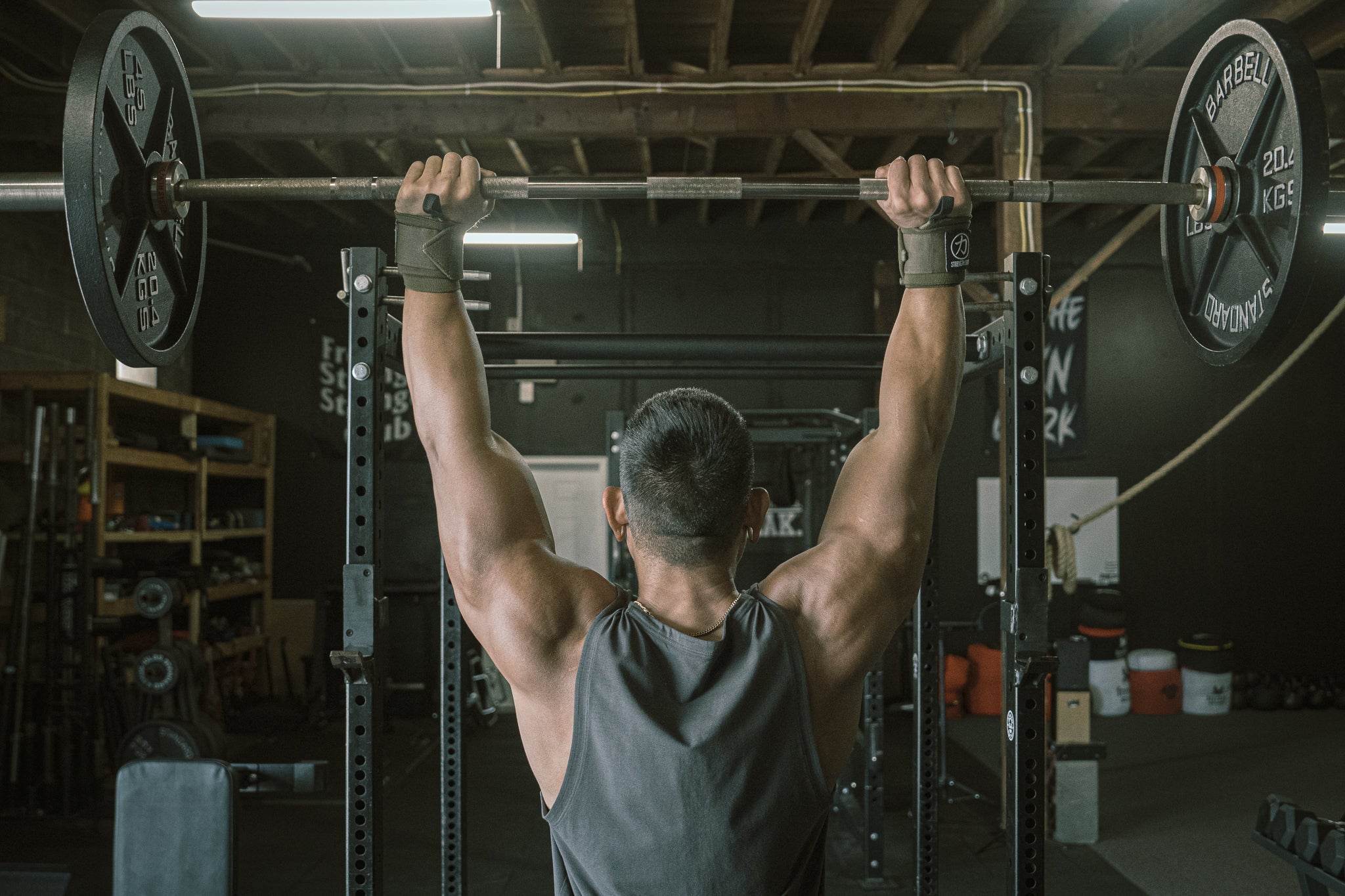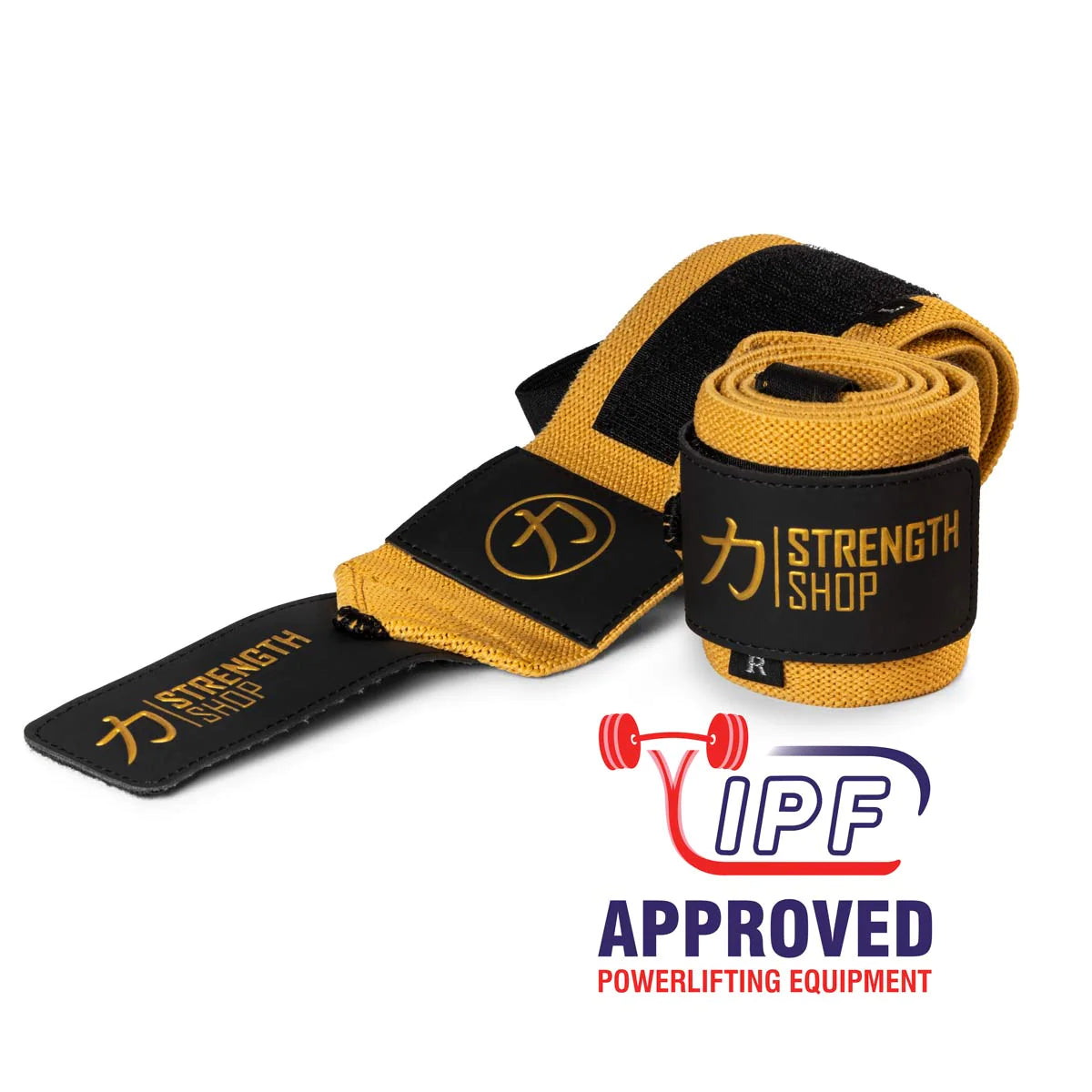Powerlifting belts are more than just an accessory — they're a game-changer for anyone serious about heavy lifting. By providing core stability and lower back support, a belt allows you to lift heavier, train safer, and confidently push your limits. Let's explore all the benefits of lifting with a belt.
Why Do Powerlifters Use a Belt?
Powerlifters use a weightlifting belt during heavy lifts to stabilize their core and protect their lower backs from strain or injury. A mouthguard reduces jaw stress, deadlift shoes improve balance, wrist wraps support grip, and a belt reinforces core, helping lifters maintain proper form under heavy loads.
Wearing a weightlifting belt can generate more intra-abdominal pressure, improving your stability and allowing you to lift more confidently and efficiently. This support improves your performance during lifts and contributes to long-term health and safety — key factors in extending your strongman life expectancy by minimizing preventable injuries.
The Physical Benefits of Using a Belt for Lifting
A weightlifting belt isn't just for show — it's a key piece of gear that can help you lift heavier and train more safely. By providing core stability and lower back support, a belt allows you to push your limits while confidently reducing the risk of injury. Let's look at all the benefits it offers.
Improved Performance and Safety
A weightlifting belt boosts your performance by increasing intra-abdominal pressure, stabilizing your core, and helping you lift heavier with more control. It keeps you safe by reducing stress on your lower back and ensuring proper form during heavy lifts like squats and deadlifts. Pair it with a powerlifting singlet and a mouthguard for powerlifting to maximize support and confidence during training or competition.
Increased Intra-Abdominal Pressure
One primary reason to wear a lifting belt is to increase intra-abdominal pressure during heavy lifts. This pressure acts as an internal brace, supporting your spine and allowing it to handle heavier loads more safely. By wearing a belt, you create a solid and stable core. This is critical when performing squats, deadlifts, or overhead press movements. The increased intra-abdominal pressure helps stabilize your spine. Additionally, a lifting belt can also reduce the risk of lower back injuries.
Improved Lifting Technique & Form
Wearing a lifting belt can also improve your lifting technique and form. The tactile feedback from a tightly strapped belt reminds you to maintain proper posture and form throughout your lifts. This can be particularly beneficial if you're a beginner still learning the nuances of correct lifting mechanics. Your belt encourages you to engage your core better, making sure you lift more with your legs and hips than your back, promoting optimal technique.
Using wrist wraps can also help with your lifts by giving you extra wrist support.
Injury Prevention
The protective aspect of lifting belts cannot be overstated. Belts are crucial in preventing injuries by improving your core stability and reducing stress on your lower back. This is particularly important if you are lifting heavy weights or participating in strength training regularly. While a belt is not a substitute for proper technique, it is a valuable adjunct to a well-rounded training program focused on safety and longevity in your chosen strength sports.
Remember that there are different types of weightlifting belts, and it’s essential to pick the correct belt for your training goals and needs.
The Psychological Benefits of Using a Belt for Lifting
Beyond the physical advantages, wearing a lifting belt can also offer you many psychological benefits, such as:
-
Boosted confidence: A lifting belt's support and stability give you a sense of security, helping you approach heavy lifts or PR attempts with greater focus and determination.
-
Reduced anxiety: Knowing your belt is there to support your spine and core can ease the fear of injury, allowing you to concentrate fully on your technique and effort.
-
Improved mental focus: A belt reminds you to engage your core and brace properly, strengthening the mind-muscle connection during your lifts.
-
Trust in your abilities: As you use the belt to push past previous limits safely, you will develop more confidence in your strength and capacity to improve.
-
Determination: The psychological edge of feeling secure can help you stay motivated and push harder during challenging sets or competitions.
When to Use a Lifting Belt
Here are four scenarios in which you want to wear a lifting belt.
1. For Heavy Lifting
Lifting belts are great for deadlifts, overhead presses, and squats. If you're lifting at or above 80% of your 1-rep max and are skilled in heavy lifting without a belt, adding a belt can enhance intra-abdominal pressure and trunk stability. This is especially useful for heavy compound lifts like squats and deadlifts during eight reps or fewer sets.
2. For Competitive Lifting
A belt can be valuable in competitions like powerlifting, weightlifting, or strongman. It helps maximize performance by increasing abdominal pressure and supporting the back. A belt can be helpful if you aim to lift maximum weight. Learn how to wear a lifting belt correctly to maximize your performance.
3. For Slight Lower Back Fatigue or Soreness
A belt could provide extra stability if your back feels slightly fatigued during heavy lifting. However, if the pain is severe, skip the movement entirely to avoid risking injury.
4. To Improve Rep Quality
A belt for moderate loads can help maintain core stability during longer sets. If your form starts to break down at the end of a set, a belt can help you complete 1-2 more quality reps, improving your overall workout.
When Not to Use a Lifting Belt
Lifting belts have pros and cons, but there are certain situations in which they are unnecessary, including a few you definitely shouldn't.
1. If Your Lower Back Hurts
Never use a belt as a crutch to lift through back pain. Instead, isolate your muscles with safer exercises or postpone the workout until you fully recover.
2. If You Rely on a Belt for Every Lift
If you use a belt for every lift, regardless of weight or movement, focus on building core strength and confidence without it. Over-reliance can lead to poor bracing mechanics.
3. If Your Form Is Poor
A belt won't fix bad form. Address technique issues first to avoid injury and maximize your training.
4. If You've Never Lifted Heavy Without a Belt
Before using a belt, learn proper bracing and core engagement under heavier loads. A belt is a supplement, not a substitute, for foundational lifting skills.
Frequently Asked Questions
Is a lifting belt beneficial?
Yes, a lifting belt is beneficial because it increases core stability, reduces stress on the lower back, and allows you to lift heavier weights more safely and effectively.
Is it better to lift with or without a belt?
It depends on the lift and your goals. Lifting without a belt helps you develop natural core strength, and using a belt enhances your stability and safety for heavy or max-effort lifts.
When should I wear a lifting belt?
You should wear a lifting belt during heavy compound lifts, such as squats and deadlifts, particularly when lifting at or above 80% of your 1-rep max.
Does a lifting belt help with form?
Yes. A lifting belt helps you maintain proper form by stabilizing your core and encouraging correct posture during heavy lifts.



















